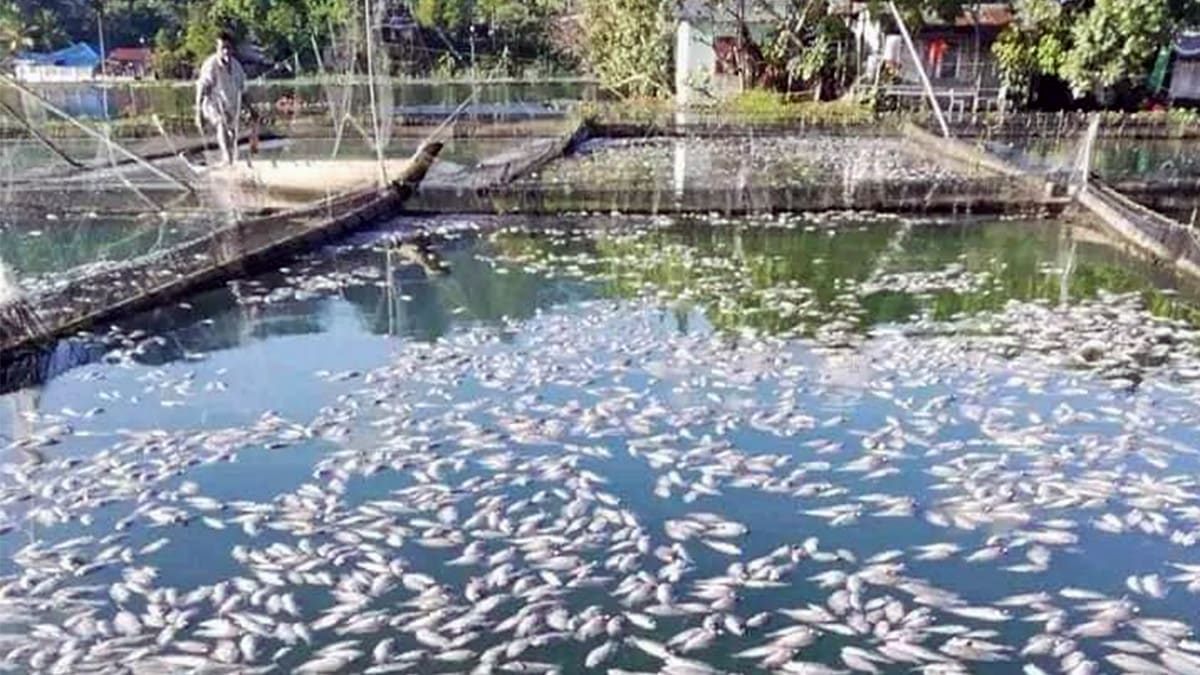
BELLY UP A fish cage operator checks on dead tilapia in his cage in Lake Sebu on Oct. 28 due to a fish kill that usually occurs during a sudden change of temperature or after a storm. —PHOTO COURTESY OF JOSE RUDY MUYCO
KORONADAL CITY — The town of Lake Sebu in South Cotabato, a top producer of freshwater fish in the province, has been hit by a massive fish kill that wiped out about 30 tons of tilapia following last week’s onslaught of Severe Tropical Storm Kristine (international name: Trami).
As a result, prices of tilapia, which are raised in cages in 70 hectares of the 350-ha lake, have dropped to as low as P25 per kilo, from the normal range of P150 to 200, after fish raisers went on an emergency harvest.
Jose Rudy Muyco, municipal lake warden, said fish cage owners recently resorted to emergency harvest after noticing floating dead fishes coming from other parts of the lake. This triggered a local supply glut that pushed prices down.
The fish kill’s damage was estimated to cost some P3 million.
“Some vendors are selling it (tilapia) at very low prices, some are given away for free than spoil it,” Jennifer Carcosia, a tilapia vendor, told a local radio in an interview on Friday.
The over 30 tons of cultured tilapia that died were found in cages in the lakeshore villages of Poblacion and Bacdodong, which occurred days after the heavy downpour spawned by Kristine on Oct. 22.
Fish cage owners have the dead fish collected and buried so these do not contribute to the contamination of the lake’s waters.
Overpopulation
“The rainwater as sources of water into the lake could be contaminated and it affects the oxygen level of the lake,” Muyco said when asked what could be the reason for the fish kill, locally known as “kamahong.”
However, he said another factor that could have contributed to the fish kill was the overpopulation of fish cages.
READ: Calamity declaration eyed in Lake Sebu due to fish kill
Muyco said the local government has already considered reducing the number of fish cages to occupy only about 35 ha to avoid future fish kills.
Muyco explained that a fish kill occurs every now and then in the lake, especially during a sudden change in temperature or the onslaught of a storm.
READ: Tilapia, a history
Usually happening during the rainy season, “kamahong” is a phenomenon characterized by the depletion of dissolved oxygen in the lake’s waters.
Muyco said it is the result of eutrophication, a situation that occurs when a body of water receives an excessive nutrient load and results in an overgrowth of algae or algal bloom. INQ